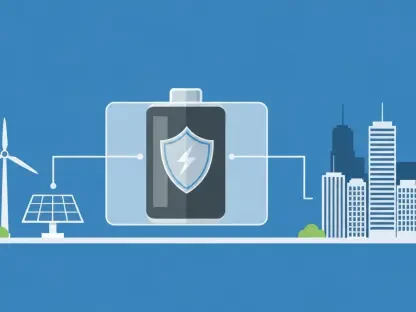Governments around the world have shown a strong enthusiasm for cloud computing, driven by the allure of modernization and increased efficiency. However, the journey toward fully embracing cloud technology has been riddled with challenges, especially for larger and more complex entities such as the U.S. federal government. By taking a closer look at the experiences of the private sector, government entities can learn valuable lessons and adopt more effective strategies for cloud adoption, ultimately ensuring better outcomes for their IT initiatives.
Initial Enthusiasm and Challenges
In the early 2000s, both the private sector and government entities were eager to embrace cloud computing. Spurred by the potential for modernization, Vivek Kundra’s cloud-first strategy aimed to lead the U.S. federal government to the forefront of cloud adoption. This initiative sought to harness the numerous benefits of cloud technology, promising streamlined operations and improved services for citizens. However, as the implementation phase progressed, several significant hurdles soon began to temper this initial enthusiasm.
The reality of budget constraints, complex procurement processes, and stringent security requirements quickly emerged as major obstacles. The federal government, due to its scale and complexity, faced unique challenges that significantly slowed its cloud journey. State and local governments, as well as international counterparts, initially moved more swiftly toward cloud adoption, but often without clear strategies. This lack of foresight led to issues such as cost overruns and integration challenges, further highlighting the need for a more considered approach to cloud migration.
Transitioning to a Cloud-Smart Approach
As private enterprises moved forward with cloud adoption, they initially adopted a cloud-first mentality, driven by the allure of modernization and potential cost savings. However, this approach frequently resulted in unforeseen costs and integration difficulties, prompting a strategic shift. Businesses began to transition towards a more nuanced, cloud-smart strategy, which emphasized evaluating the business value of cloud adoption on a case-by-case basis.
Governments stand to benefit significantly by learning from this transition. Adopting a cloud-smart approach involves a thorough consideration of the technical, financial, and strategic factors for each system before deciding on cloud migration. By ensuring that cloud adoption is driven by business value rather than an indiscriminate push toward modernization, government entities can avoid many of the pitfalls that plagued the private sector’s early cloud initiatives. This strategic approach ensures that investments in cloud technology deliver tangible benefits and align with overall objectives.
Lessons from Private Enterprises
One of the most important lessons that government entities can learn from the private sector is the value of hybrid and multicloud strategies. These approaches involve combining cloud-based and on-premises solutions tailored to specific workloads, providing greater flexibility and reducing dependency on any single vendor. This strategy can make it easier to navigate the complexities of cloud migration while optimizing resources for maximum efficiency.
Governments should carefully consider adopting hybrid and multicloud strategies to optimize their IT portfolios. This flexible approach allows for a more balanced and strategic use of cloud technologies, ensuring that each workload is placed in the most appropriate environment based on its unique requirements. By doing so, governments can avoid the one-size-fits-all mentality that often leads to suboptimal outcomes and better address their diverse needs.
Business Value and Workforce Modernization
A key aspect of successful cloud strategies in the private sector is the emphasis on evaluating the business case for each system’s move to the cloud. This involves a thorough analysis of the technical, financial, and strategic factors to ensure that cloud adoption delivers tangible business value. Governments can adopt a similar approach, ensuring that their cloud investments yield meaningful results and align with their broader objectives.
In addition to evaluating the business case for cloud migration, governments need to focus on modernizing their workforce. Developing the skills necessary to manage complex hybrid systems is crucial for effective cloud adoption and long-term success. By investing in workforce training and development, governments can ensure that their IT staff is well-equipped to handle the demands of a cloud-smart approach, ultimately leading to more successful outcomes.
Overcoming Cultural Resistance
One of the most significant challenges in both the private and public sectors is overcoming resistance to change. Moving toward a cloud-smart approach requires fostering a culture of platform neutrality, where decisions are based on optimizing processes and fiscal responsibility rather than simply following technological trends. Governments need to address cultural resistance by promoting the benefits of cloud-smart strategies and emphasizing the importance of business value in their IT initiatives.
This cultural shift is essential for successful cloud adoption and long-term IT modernization. By encouraging a mindset that prioritizes business value and strategic decision-making, government entities can overcome resistance to change and create an environment where cloud technologies can be effectively leveraged. This shift will enable governments to make better-informed decisions about their cloud investments and ensure that these investments deliver the desired outcomes.
Focus on Business Value and Flexibility
Governments across the globe have demonstrated strong enthusiasm for adopting cloud computing, attracted by the promises of modernization and enhanced efficiency. However, the path to fully integrating cloud technology has been fraught with challenges, particularly for larger, more complex organizations like the U.S. federal government. To navigate these hurdles more effectively, government entities can look to the private sector’s experiences, drawing valuable insights and best practices from them. By doing so, they can adopt more successful strategies for cloud implementation. This approach can lead to improved outcomes for governmental IT initiatives, ensuring they achieve the desired results and maximize the benefits of cloud technology. Adopting lessons from the private sector can help government agencies tackle issues related to security, scalability, and the overall transition process, thereby enhancing the efficiency and effectiveness of their operations.









